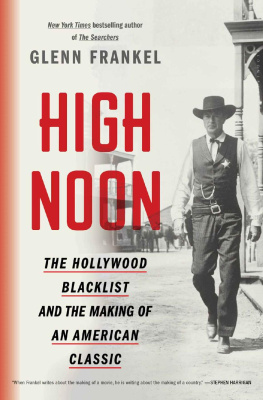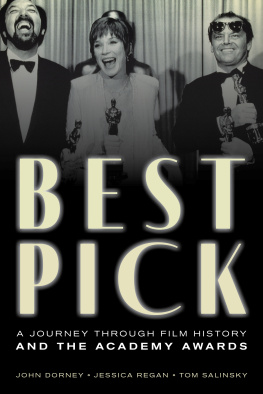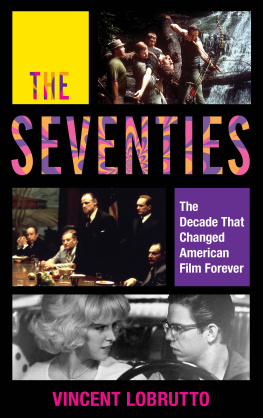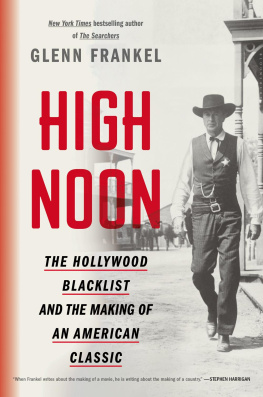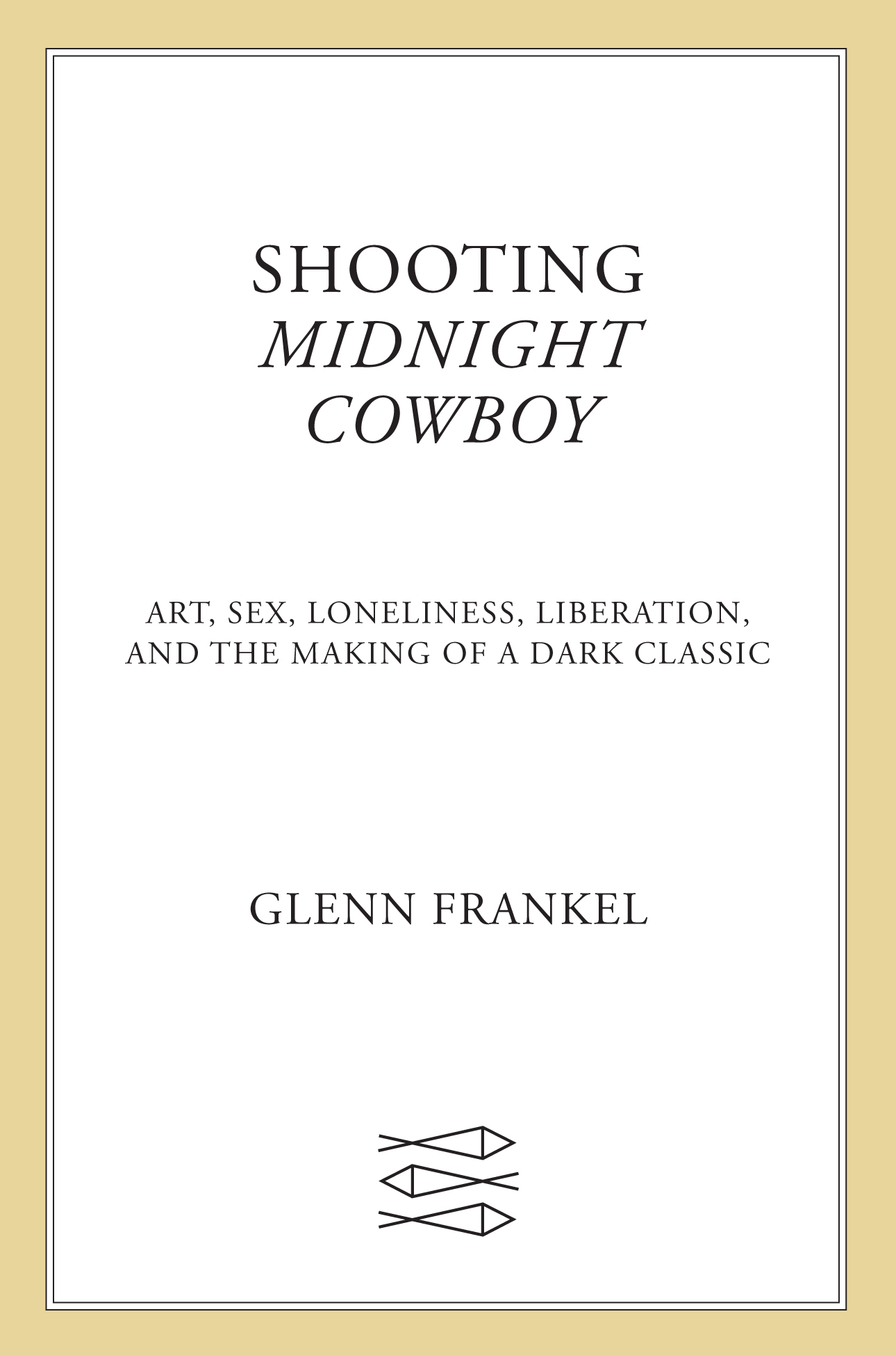The author and publisher have provided this e-book to you for your personal use only. You may not make this e-book publicly available in any way. Copyright infringement is against the law. If you believe the copy of this e-book you are reading infringes on the authors copyright, please notify the publisher at: us.macmillanusa.com/piracy.
I like the surprise of the curtain going up, revealing whats behind it.
John Schlesinger
John Schlesinger was looking forward to a triumphant entry on his first visit to Hollywood. Darling, the British directors third professional feature film, had been a surprise hit on both sides of the Atlantic, winning three Academy Awards and introducing international audiences to twenty-five-year-old Julie Christie, whose fresh looks and exuberant energy embodied the naughty spirit of Swinging London. She played Diana Scott, a thoughtless and predatory supermodel who broke up marriages, yawned her way through orgies, and generally set new records for narcissism and duplicity, yet radiated an irresistible charm and vulnerability that made you feel sorry for her even as you cheered her downfall. It was only Christies second major film, yet with Schlesingers careful direction, she gave such an adept and nuanced performance that she won the Oscar for Best Actress.
The year was 1966 and Hollywood loved new talent, especially when it came with a British accent. The moviemaking capital of the world had recently embraced Peter OToole, Albert Finney, Sean Connery, Julie Andrews, and Michael Caine, and now it loved Julie Christie and the thoughtful filmmaker who had recognized and captured on film her seductive charisma.
Suddenly, after a decade-long apprenticeship making short, spirited documentaries for BBC Television and low-budget black-and-white feature films, John Schlesinger was the hot new thing, a movie director of wit, irony, and substance. Everyone wanted to meet him, and powerful people were pushing substantial projects toward him, including FunnyGirl and Fiddler on the Roof, both of which he turned down. Best of all, studio heads were asking, What do you want to do next, John? And when John said what he wanted to do next was a big-budget adaptation of Thomas Hardys Victorian novel Far from the Madding Crowd, starring Christie, Alan Bates, Peter Finch, and Terence Stampamong the cream of British acting talentMGM said yes.
He spent six months slogging with cast and crew through the quaint market towns and ancient, picturesque fields of rural Dorset and Wiltshire in southwest England. When the film was finished, the studio flew three hundred journalists to London, housed them at the Savoy, and treated them to a week of free food, royal welcomes to Windsor Castle and Buckingham Palace, boat rides and bus trips through Thomas Hardy country, and a star-studded preview at the Marble Arch Odeon. Movie premieres were planned for New York and Los Angeles, with another one squeezed between them at the last minute for Washington, D.C. Success was a foregone conclusion.
Then the reviews started arriving. Far from the Madding Crowd bombed. Despite its lush visual beauty and fine acting, the film was too modern to feel authentic, yet too traditional to feel youthful, and Christies curiously underwritten character careened from headstrong, independent woman to swooning fool for love, a modern material girl trapped in a nineteenth-century soap opera. The New York Times chief film critic, Bosley Crowther, usually a sucker for sincere classical epics, mournfully branded it sluggish, indecisive, and banal.
John Schlesinger, who thought he was coming to America for a coronation, instead found a wake.
At the New York premiere, he could sense members of the audience slipping into a coma. There was utter silence at the end. It was frightfully slow, he would later admit. We were too much in awe of Thomas Hardy.
A lavish premiere party had been planned for after the screening at the Grand Ballroom of the Plaza Hotel. When John walked in, he noticed there were only three full tables. The handful of intrepid guests applauded wanly. It was an absolute disaster, he recalled. Even his parents slipped out early.
By the time he awoke the next morning, the Washington premiere had been canceled. Instead, he flew directly to the West Coast, escorted by the head of publicity for MGM. The man asked gingerly what John was planning for the future, then offered a piece of advice: Be very careful what you do nextyou cant afford to make something which is really not right for you.
Despite his sudden belly flop as a big-time director, John Schlesinger had no intention of doing anything other than what he thought was right for him. And what was right for him, he had decided, was to make a film out of a novel that was so bleak, troubling, and sexually raw that no ordinary film studio would go near it.
Midnight Cowboy, written by James Leo Herlihy and published in 1965, tells the story of Joe Buck, a handsome but not overly bright dishwasher from Texas who buys himself a cowboy outfit and hops a bus to New York City to seek his fortune by becoming a male hustler selling sexual favors to frustrated older women. Joes business plan fails miserably and he winds up squatting in a shabby and deserted apartment building with Ratso Rizzo, a disabled, tubercular con man and petty thief. Ratso becomes Joes host, pimp, adviser, and, ultimately, his friend. Joe ends up turning tricks with men in Times Square, and savagely beats and robs one older customer to buy bus tickets to Florida for himself and his desperately sick friend, who wets his pants and dies just before the bus arrives in Miami. The book contains scenes of heterosexual and homosexual intercourse, sadomasochism, fellatio, gang rape, prostitution, and illegal drug use.
Trapped inside the straitjacket of Hollywoods old Production Code system of censorshipunder which even a husband and wife couldnt be seen sleeping together in the same bed, and a toilet could never be shown, let alone flushedMidnight Cowboy could not have been made just a few years earlier. But by 1968, the year after the disastrous release of Far from the Madding Crowd, the motion picture industry was in deep trouble. Ticket sales had been steadily falling for more than two decades, and most of the studios were sliding toward insolvency. The genres that had sustained Hollywood during its long golden agewesterns, musicals, romantic comedies, biblical and historical epicshad grown stale and predictable, and many of the highly paid stars and filmmakers who worked in them had lost the magical power to attract increasingly younger audiences. In a time of political upheaval and changing social mores, Hollywood seemed less relevant than ever.


